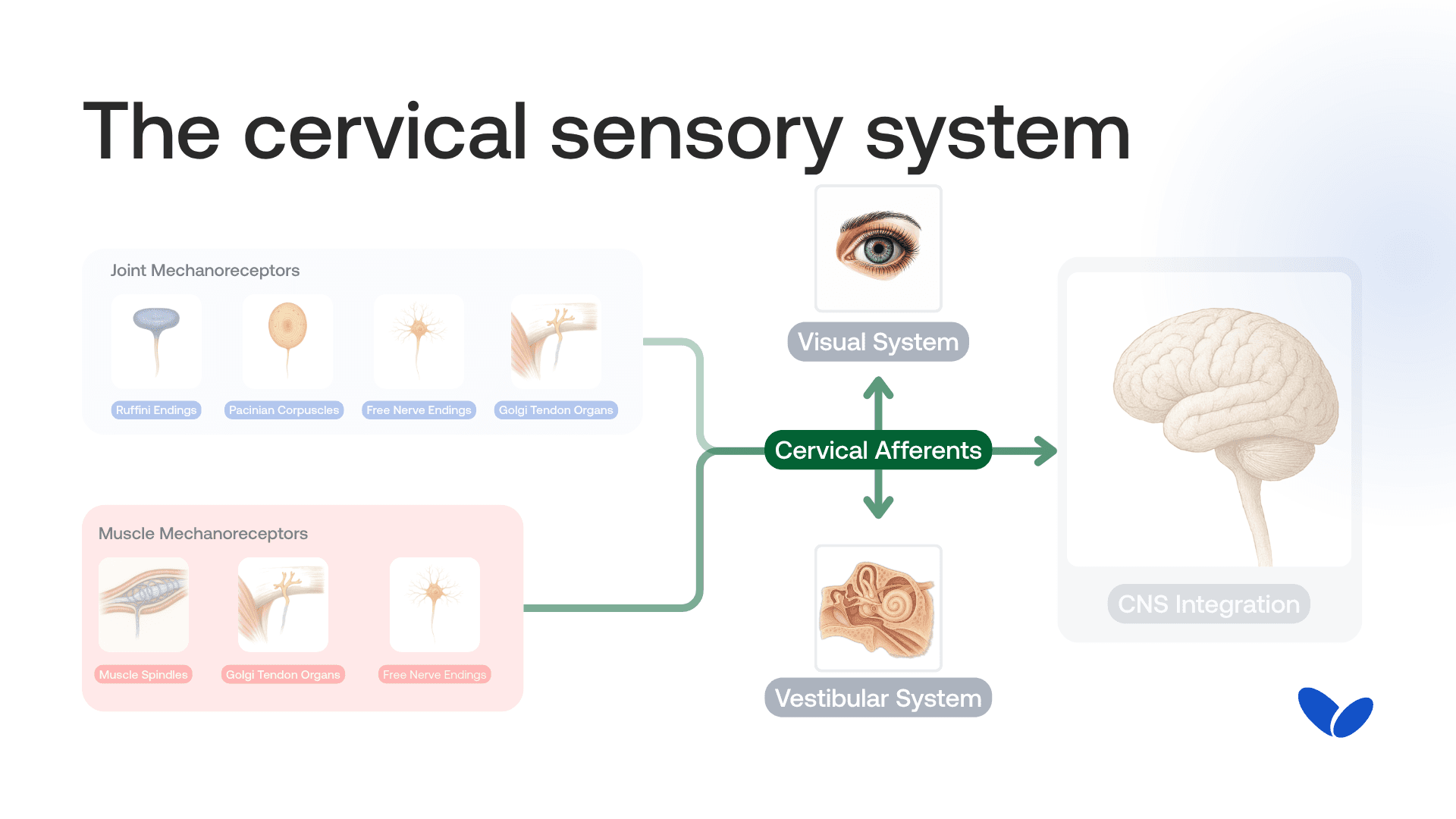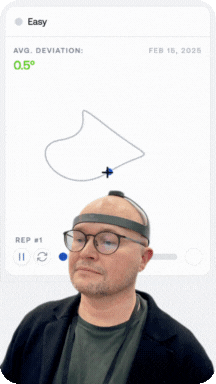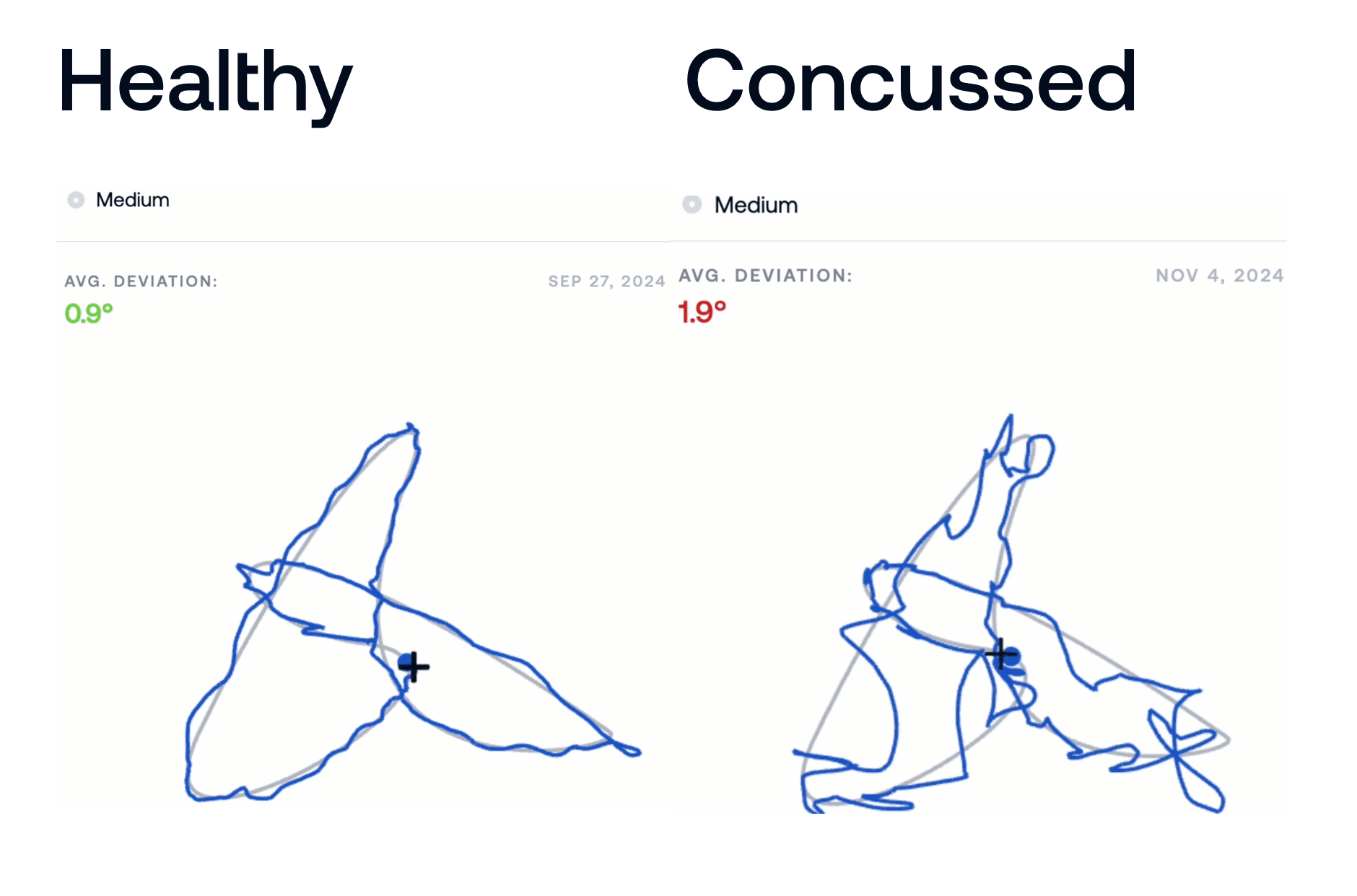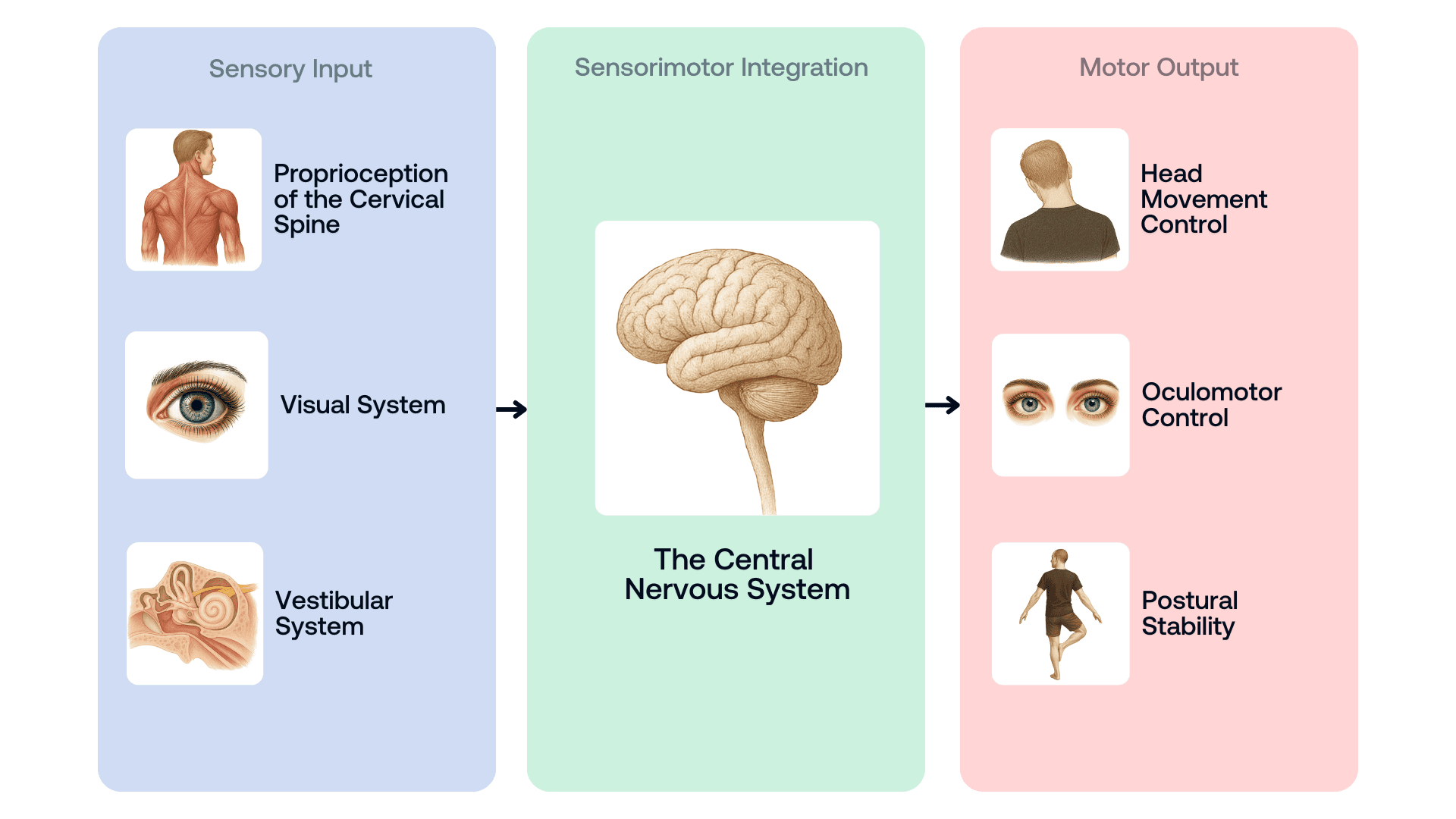What is the Butterfly Test®?
The Butterfly Test is an objective clinical assessment used to evaluate cervical sensorimotor control, specifically movement sense.
Written by
Dr. Hilmar Leonardsson
Medical Lead @ NeckCare
The Butterfly Test is an objective clinical assessment used to evaluate cervical sensorimotor control, specifically movement sense. It is designed to detect deficits that may contribute to symptoms such as dizziness, headaches, postural instability, or visual disturbances—especially in cases involving neck pain, whiplash-associated disorders (WAD), or concussion.
Clinical Background of the Butterfly Test®
Cervical movement sense depends on the integration of proprioceptive input from the neck with visual and vestibular systems. When the cervical spine is injured, mechanoreceptors (especially muscle spindles) may send distorted signals to the brain, disrupting motor control. The Butterfly Test helps identify these impairments by quantifying how accurately a patient can perform guided head movements.

How the Butterfly Test® Works
The patient sits in front of a computer screen wearing a head-mounted motion sensor that controls an on-screen cursor. A moving target appears on the screen, traveling along an unpredictable path. The patient's task is to keep the cursor on the target as accurately as possible using fine head and neck movements.
Gaze remains fixed on the target.
Movements must be small and precise.
The path complexity and target speed control test difficulty.
There are three difficulty levels: easy, medium, hard.
Notably, the speed and amplitude of the head movements are kept relatively low to prioritize proprioceptive feedback over vestibular stimulation.

What does the Butterfly Test® Measure?
The NeckCare System® analyzes the patient's tracking performance using the following metrics:
Deviation – Average distance between the patient-controlled cursor and the target.
On Target Ratio – % of time the cursor stayed on the moving target.
Ahead Ratio – % of time the patient led the target.
Behind Ratio – % of time the patient lagged behind the target.
Each result is color-coded based on comparison to normative data
🟢 Green = Average or above average performance
🟡 Yellow = Below average performance
🔴 Red = Indicates impaired performance

How to Administer the Butterfly Test®
1. Setup
Seat the patient in front of the screen.
Place the NeckCare Device (sensor + headgear) securely on the patient's head.
Launch the Butterfly Test on the NeckCare platform.
2. Instructions to Patient
"You'll see a moving dot on the screen. Please keep your eyes on the dot and use only your head to follow it. Stay on target as best you can."
3. Run the Butterfly Test
Start with the easy path, progressing to medium and hard if tolerated.
Allow a short pause between each path.
Each path runs automatically and requires no manual timing.
4. Review Results
Results display immediately after each path.
Use Deviation, On/Ahead/Behind Ratios, and color indicators to interpret outcomes.
Compare against session history and/or baseline testing over time.
Clinical Relevance of the Butterfly Test®
Poor performance on the Butterfly Test may indicate a sensorimotor control deficit that warrants targeted rehabilitation. Studies have shown the test to be:
Reliable (ICC 0.75–0.87 test-retest reliability)
Discriminates various patient populations from healthy individuals (idiopathic neck pain, WAD, concussion)
Sensitive (90.3%) and specific (96.7%) in identifying dysfunction in patients with neck pain and WAD
It is particularly helpful in concussion rehabilitation and whiplash assessment, where symptoms may not be explained by orthopedic findings alone.
Limitations and Considerations
Results should always be interpreted in conjunction with other clinical findings. Factors such as oculomotor control, attention, and cognitive abilities may influence performance. The Butterfly Test complements a comprehensive sensorimotor evaluation.

Conclusion
The Butterfly Test offers clinicians a structured, objective method for assessing cervical sensorimotor control—something that’s often overlooked in routine care but can be critical in cases involving concussion, neck pain, or whiplash. By visualizing performance and quantifying tracking accuracy, it helps uncover deficits that can enable more targeted treatment and improve patient outcomes.
If you’re working with patients who report dizziness, headaches, or unsteady movement—or if you want to expand your documentation of cervical function—the Butterfly Test can add real value to your clinical assessments.
If you're interested in learning more or seeing how the test works in your setting, get in touch. We'd be happy to walk you through it.
Published on
Written by
Dr. Hilmar Leonardsson
Medical Lead @ NeckCare
Try it out
